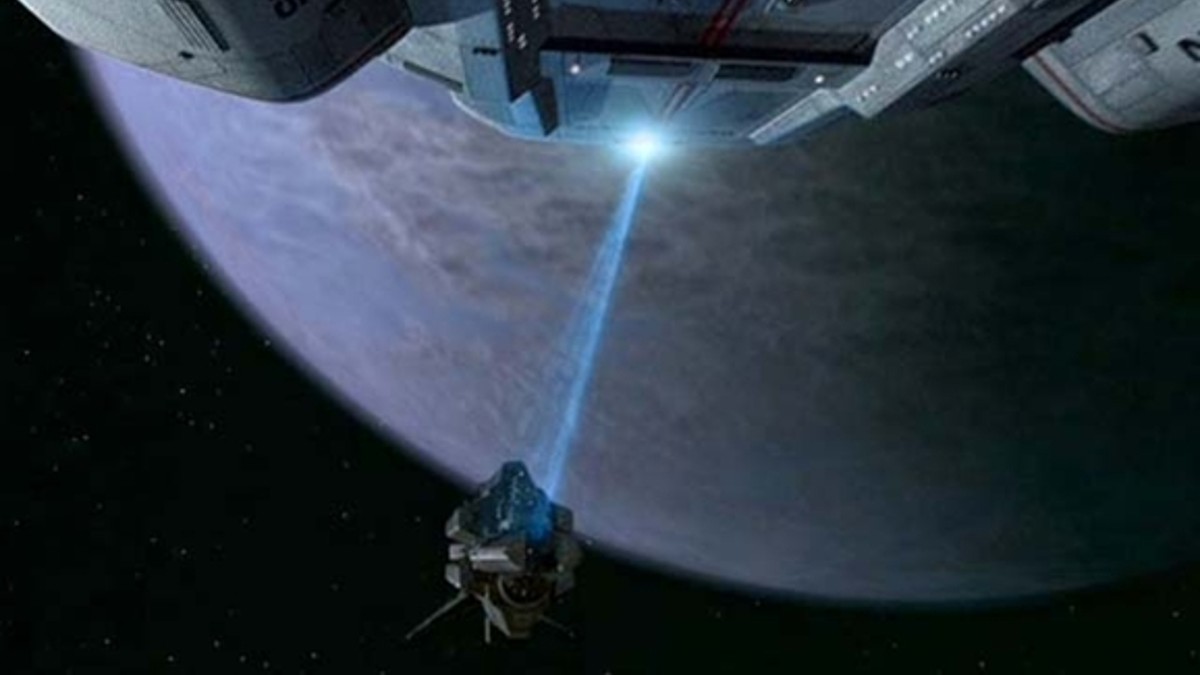Beam Me Up, Scotty! Scientists Create First Working Tractor Beam
Scientists have built a real-life tractor beam, but it's not like the science fiction version you're expecting.

Star Trek helped to make even the average couch potato aware of futuristic tractor-beam technology. As that show demonstrates (sometimes with the help of faithful engineer Scotty), the tractor beam is useful for remotely grabbing items with nothing but a beam of light and then moving them somewhere else (such as inside the ship for analysis). Now, Optics Express has published a paper verifying that a real-life tractor beam has been created, though it is far tinier than anything you’ve seen in Star Trek or other popular sci-fi.
As with most awesome scientific breakthroughs, this tractor-beam technology has been something that researchers have been working on for a very long time. Previously, the force of the light was just too small to pull any of the objects that scientists tried it on. This new team developed an innovative approach that has gotten results where previous teams have failed.
According to QingDao University of Science and Technology researcher Lei Wang, he and his team created a “light-pulling force” with a much greater amplitude than previous projects. The final result of this is a tractor beam that can produce “more than three orders of magnitudes larger than the light pressure used to drive a solar sail.” If you’re not already familiar, solar sails rely only on photons for the momentum needed to travel through the vacuum of space.
However, while the comparisons to Star Trek conjure up mental images of giant starships using the tractor beam to lift large objects like satellites, shuttlecraft, and meteors up using nothing but light, the current reality is much more humble. The tractor beam the researchers have created is very tiny, and this affects how much it can lift. And right now, the process must work in tandem with a laser.
The scientists in question ended up developing composite structures comprised of silicon dioxide and graphene. They blasted these structures using lasers, and this released gas molecules into the air. From there, researchers were able to use their tractor beam to bend the structures towards the beam of light they had created.

While this tech may be a long way from what we’re used to on Star Trek, it looks like the research team is already thinking about how this technology could help us explore distant planets and one planet that’s not-so-distant. The environment they were testing the tractor beam on is actually quite similar to what is found on the planet Mars. In time, the scientists are hoping their tech could be used to move aircraft and vehicles on the red planet once we have made more serious efforts to colonize it.
Back in 2011, NASA explored the possibility of using tractor beams to gather samples from the planet Mars, and it looks like this team has made that possibility much closer to a reality. Furthermore, Elon Musk is still focused on humanity eventually colonizing Mars. Once that happens, it’s exciting to know that we’ll have the technology needed to make the most of our exploration thanks to technological innovations such as this.













